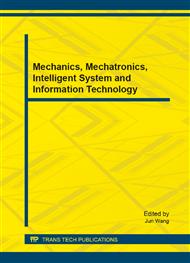p.3
p.7
p.12
p.17
p.23
p.28
p.35
p.40
A Symbolic Dynamics Approach to Random Walk on Koch Fractal
Abstract:
The paper presents a new symbolic dynamic approach to the research of the random walk and Brownian motion (BM) on Koch fractal. From the symbolic sequence of Koch automaton, on the one hand, we obtained the geometric description of the Koch curve completely, and constructed the state space of the random walk with the symbolic sequence. And the precise arithmetic representation of Koch curve is provided by the deterministic Rademacher sequence. On the other hand, the arithmetic feature of the Koch automaton, the position numbers, forms a partition of integer , which is naturally a one-dimensional lattice, it will be underlying space of the BM directly. When the chemical distance is introduced to measure the distance between two states, analytic results of the model for random walk on Koch fractal are obtained, particularly the relation between the chemical distance and the Hausdorff measure is discussed, and the Wiener Process in terms of Hausdorff measure is constructed parallel.
Info:
Periodical:
Pages:
17-22
Citation:
Online since:
August 2014
Authors:
Keywords:
Price:
Сopyright:
© 2014 Trans Tech Publications Ltd. All Rights Reserved
Share:
Citation:


